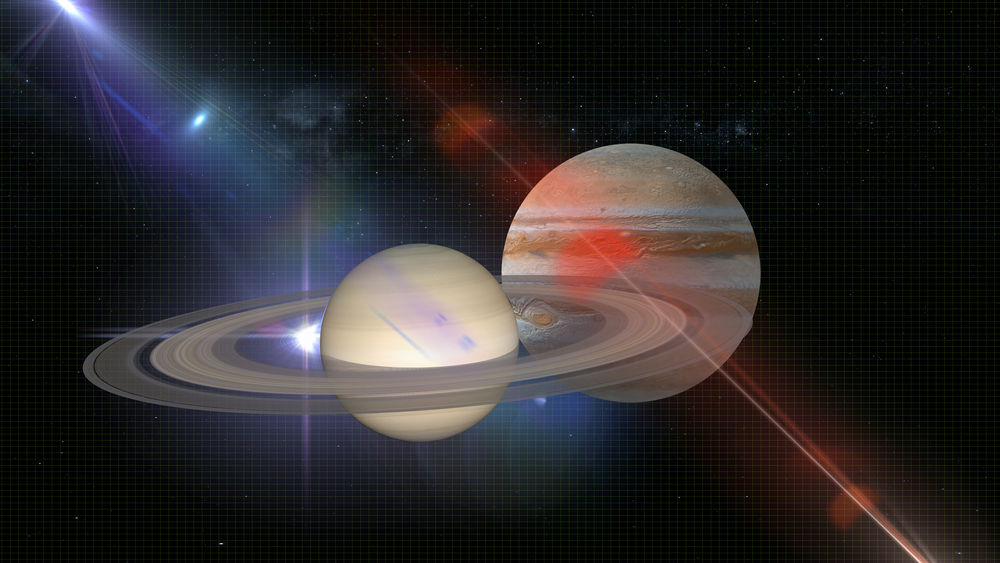For the first time since the Middle Ages, Jupiter and Saturn will be so close in the sky that, to the unaided eye, they will look almost look like one planet.
The planets are currently growing closer together in the sky and reach their closest on 21 December.
While they meet like this every 20 years or so, this one is special because the last time you would have been able to look up and see the planets this close was back on 4 March, 1226.
In 1226 Genghis Khan was building the Mongol Empire and the Catholic Church practice of Eucharistic adoration was made available among lay people for the first time.
USQ Astrophysicist Professor Jonti Horner said it’s all about everything lining up at the same moment.
“Normally when Jupiter and Saturn come close together one appears higher or lower, but we are going through the point where their orbits cross in the sky,” Professor Horner said.
“They will almost look like one bright star.”
Professor Horner suggests a helpful trick to make sure you can find them in the sky.
“A few days beforehand on the 17th of December they will be very close to each other and the thin crescent moon, so that will make them easy to find, and a good photo opportunity,” he said.
“An hour or two after sunset if you look to the west, Jupiter is the brightest thing in the sky after the moon.
“Once you have found them on the 17th, you can pop out each night and you’ll know where to look ahead of the 21st.”
Coincidently, 21 December is also the summer solstice, the day that has the most sunlight hours in the year.

But the planets aligning are not the only spectacle to catch in the sky this month with the year’s most spectacular display of natural fireworks reaching its peak on Sunday, 13 December.
The Geminids are a meteor shower that is produced with Earth runs through debris left behind by a disintegrating asteroid named 3200 Phaethon.
The annual show will peak at 2am but will be able to be seen from 9pm onwards.
In recent years the Geminids have been growing more active with observed rates exceeding one per minute, in the early hours of the morning at their peak.
“It will be possible to spend the entire night watching the Geminids without any interference from our nearest celestial neighbour as the moon will be new around this time,” Professor Horner said.
“If it’s a clear night, find a nice spot away from the city lights and just before the radiant reaches its highest you will catch the Geminids at their best.”
To see the Geminids look towards the north east for the Gemini constellation below Orion.
The shower’s radiant (the point in the sky from which the Geminids appear to radiate) is located near the bright star Castor.
Meteors from the shower can appear in any part of the sky, but all will trace back to that single part of the night sky.


